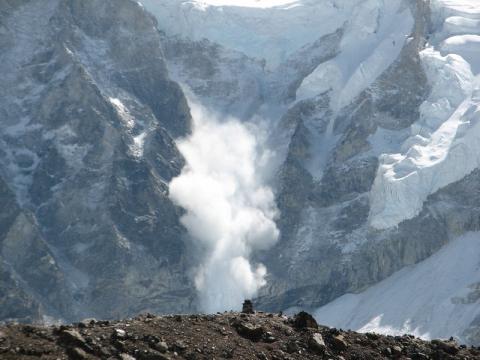
(photo by Ilan Adler)
Heavy snowfalls this winter across the Northern Hemisphere led to record avalanches. For the 2018–19 season, the Colorado Avalanche Information Center reported 2,557 observed slides, up 96 percent over the five-year average. The Swiss Avalanche Institute reported that, across Europe, 147 people died in avalanches up to May 13, a 47 percent rise over the 20-year average.
According to etymological dictionaries, “avalanche” first appeared in print in French in the 17th century. It comes from the old French word avaler, meaning “descend” or “go down.” It became the modern verb for “to swallow.” Aval today means “downstream” and derives from the phrase à val, “toward the valley.”
The second half of the word, -anche, is a variation of the common French suffix -ance, from the Latin -antia. The suffix turns a verb into a noun. An English example would be turning deliver into deliverance.
Other Latin-based dialects have similar words: in Savoyard lavantse, in Provençal lavanca and in Romanche avalantze. The related word avalement, meaning “swallowing,” was adopted by Georges Joubert to describe a form of down-unweighting, or upward retraction of the legs—a turn that functions to absorb a roll in the terrain. —Seth Masia
